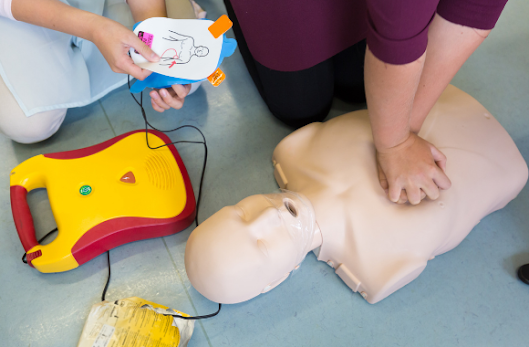When health emergencies occur, the responder needs to act first to figure out the type of emergency and figure out the appropriate solution. There are different first aid procedures, which vary depending on the type of emergency and the age of the victim.
- Different types of wounds: Wounds result from injuries that cause the skin to open or tear up. The first aid for wounds depends on the cause of the injury and severity. These injuries can result from injuries by fire, hot objects, and fluids. Wounds could also occur from falls, cuts by sharp objects, and piercings. When providing first aid for damages, you need to assess the cause. Always keep in mind that injuries can quickly get infected and need to be handled with care.
- Fractures and sprains: Fractures are cases of broken bones, while sprains occur from the injury of ligaments and tendons located within joints. Fractures are more severe and require should be treated as health emergencies. On the other hand, Sprains often heal on their own following a simple first-aid procedure and require less medical attention. Fractures are very painful and will at times require medical diagnosis through an X-ray to establish. You, therefore, need to pay special attention to such an injury to avoid further damage.
- Animal and insect bites: an animal bite needs to be treated by trained medical personnel. Some animal bite injuries could be fatal depending on the type of animal and its health status.
Insect bites can also lead to poisoning as well as an allergic reaction. The first aid procedures vary depending on the type of insect or animal. - Heat-related illnesses: these are injuries that occur from extreme temperatures. It could be extreme heat, heat exhaustion, or extreme cold (hypothermia and frostbites). Also, there are different first aid procedures for either.
- CPR: CPR is a critical life-saving technique that applies to victims of cardiac arrest and choking. The procedure involves chest compressions and the use of the AED. The method for performing CPR is covered intensively in CPR certification and AED classes.
In CPR, the rescuer uses chest compressions to maintain blood circulation by providing an artificial heartbeat to the victim. The AED device is used to restore regular heart activity. Both of these procedures are critical in cardiac arrest cases. The faster they are performed, the better the chances of survival of the victim.
In most training institutions, both CPR and AED are covered under the same certification program. Just like first aid certification, CPR and AED certification is also available online and is open to all.
When choosing first aid and CPR classes, it is best to for a recognized training institution. There are many CPR and first aid training institutions available online, all promising to be accredited. However, you need to research these institutions’ credibility and choose one with excellent ratings and is AHA accredited.
Read the complete article here.
| Enroll Now for Online CPR/AED Training and Certification Classes at just $19.99. |

